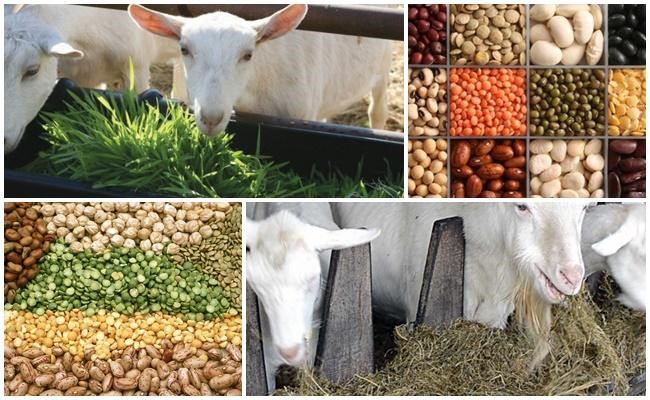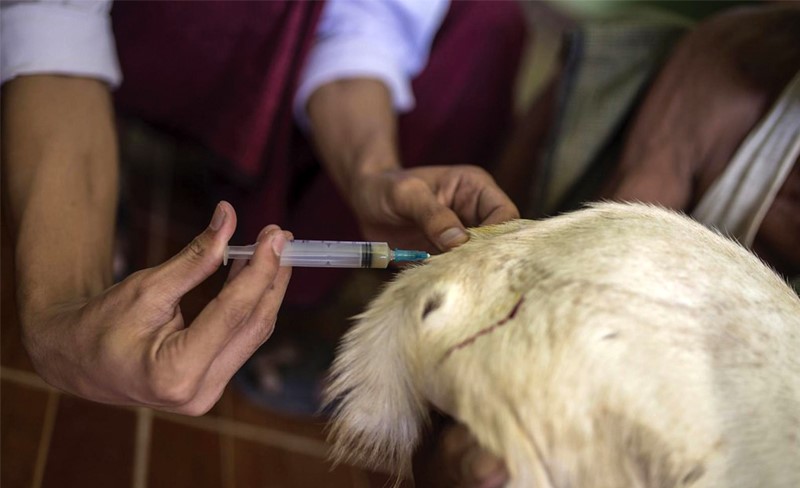In goat farming, beginners often encounter four common mistakes related to housing, breed selection, feeding, and more.
Many start-up farmers choose goat farming because goats mainly feed on grass and can be raised under free-range systems. With sufficient capital and available land, they assume they can immediately engage in goat production. However, this farming model may fail if attention is not paid to the following four common mistakes in goat husbandry.
1. BREED SELECTION
– For beginners, selecting the right breed based on the production purpose—whether for breeding or fattening—is crucial. Choosing goats for the wrong purpose can lead to severe consequences:
– For breeding stock: Purchasing goats from a single source without genetic diversity can lead to inbreeding, causing congenital defects, weak offspring, or high neonatal mortality, resulting in economic loss. Low-quality breeds produce poor offspring, which generates little to no profit—or even losses—for new farmers.
– Therefore, selecting goats based on the production purpose requires proper knowledge of different goat breeds and their behavioral and physiological traits. Farmers are advised to watch educational content such as “Tips for Selecting Goat Breeds” or “Goat Fattening Techniques” by Dr.vet for further reference.
– Additionally, many farmers purchase breeding goats from unreliable sources with unclear lineage. This often leads to introducing weak, disease-prone animals into the herd, increasing risk during the rearing process. It’s important to choose goats from reputable suppliers with documented pedigrees, including healthy grandparents and parents. The breeding goats should be free from infectious diseases and should exhibit good growth performance and vigor.
2. HOUSING
– Goat pens may appear simple, but they must be dry, well-ventilated in summer, and warm in winter. However, many farms make the following mistakes:
+ Pens are built too low, with floors too close to the ground and insufficient ventilation, exposing goats to waste accumulation and ammonia buildup from urine and feces.
+ Flooring is often made from mixed or recycled materials (bamboo, wood) of uneven quality, preventing proper manure drainage. This makes cleaning difficult and shortens the floor’s durability.
– Recommended solutions
+ Construct floors using wooden slats sized 5 x 3 cm, spaced 1–1.5 cm apart, to allow manure and urine to pass through while preventing hoof injuries. The floor should be elevated at least 50–80 cm above ground level to maintain hygiene and airflow.
+ If using bamboo flooring, ensure slats are flat, smooth, and placed with the inner bamboo curve (cat bamboo) facing downward to prevent waste accumulation and hoof injuries. The spacing between bamboo slats should also be 1–1.5 cm.
+ Clean and collect manure regularly. Disinfect the pen, tools, and surrounding area before and after introducing or selling goats using strong disinfectants like Dexit 400 to eliminate pathogens.
+ Regularly disinfect feed troughs, drinking containers, and housing with Dexon Super disinfectant by Interchemie (Netherlands) to control and prevent disease outbreaks.

3. FEED
– Many farmers aim for rapid weight gain in goats by supplementing with concentrated feed, specifically pelleted commercial feed. However, they often use pelleted feed formulated for pigs or poultry instead of goat-specific formulas. This inappropriate supplementation can lead to serious health issues such as bloat and urinary calculi, which can be fatal without timely intervention.
+ Pig and poultry feeds typically contain a 1:1 calcium to phosphorus ratio, which is unsuitable for goats. This imbalance can lead to urinary stone formation (urolithiasis) due to mineral deposition in the kidneys and urinary tract. Over time, large stones may obstruct urine flow, causing a potentially fatal condition known as urinary blockage in goats. Bloat (ruminal tympany) is another common condition arising from improper feeding. If not treated promptly, it can lead to sudden death
+ New or inexperienced farmers often do not recognize the underlying causes of these conditions, leading to repeated outbreaks within the herd. As a result, the mortality rate increases, or affected goats may need to be culled or sold at a loss—causing significant economic damage to the farm.
– Solution
+ Supplemental concentrate feeding should be carefully managed. The proportion of concentrate in the goat’s daily diet should not exceed 35%. Feed amounts must be tailored to each animal’s individual intake capacity to avoid overfeeding. Use goat-specific pelleted feeds with a calcium to phosphorus ratio of 2:1, which is optimal for goat metabolism and health.
+ Take advantage of locally available natural feed resources, such as forage and silage (fermented feed), in appropriate quantities. This not only reduces feeding costs but also improves the overall economic efficiency of the goat production system.

4. INADEQUATE DISEASE PREVENTION IN GOATS
– Farmers often underestimate the importance of disease prevention. Most goat raisers only look for treatment after goats become sick and do not take proactive measures to prevent diseases—especially viral infections—through vaccination or the use of prophylactic antibiotics during adverse weather conditions. As a result, when disease outbreaks occur, treatment becomes difficult, and mortality rates can be high. In cases where viral diseases such as pasteurellosis (hemorrhagic septicemia) or goat pox occur, the infection can spread rapidly through the herd, causing significant losses for the farmer.
– Solution

+ It is essential to follow a complete and accurate vaccination schedule for the prevention of infectious diseases in goats, including goat pox, pasteurellosis, enterotoxemia (necrotic enteritis), and foot-and-mouth disease. Goats should also be dewormed after 3 months of age, with booster doses administered every 6 months. For deworming, you can refer to Intermectin by Interchemie (Netherlands).
+ During periods of weather-related stress, it is advisable to use preventive antibiotics. One option is Biocillin 200 WS by Interchemie, which contains Amoxicillin 20%, a broad-spectrum and safe antibiotic. Alternatively, Florone by VB Pharma, which contains Florfenicol in an easy-to-use powder form, can be mixed with feed to help proactively prevent respiratory and digestive tract infections in goats.
+ Regular supplementation with vitamins, probiotics, liver and kidney detoxifiers, and immune boosters is recommended to support healthy growth and resilience in goats.
While a significant investment may be required to build housing, purchase breeding stock, feed, and equipment, the success or failure of goat farming depends on many factors. Therefore, it is crucial to learn and apply proper techniques and gain experience from seasoned farmers. Be meticulous in every stage—from breed selection to daily care. Don’t let these common mistakes negatively impact your herd, especially when you are just starting out.
